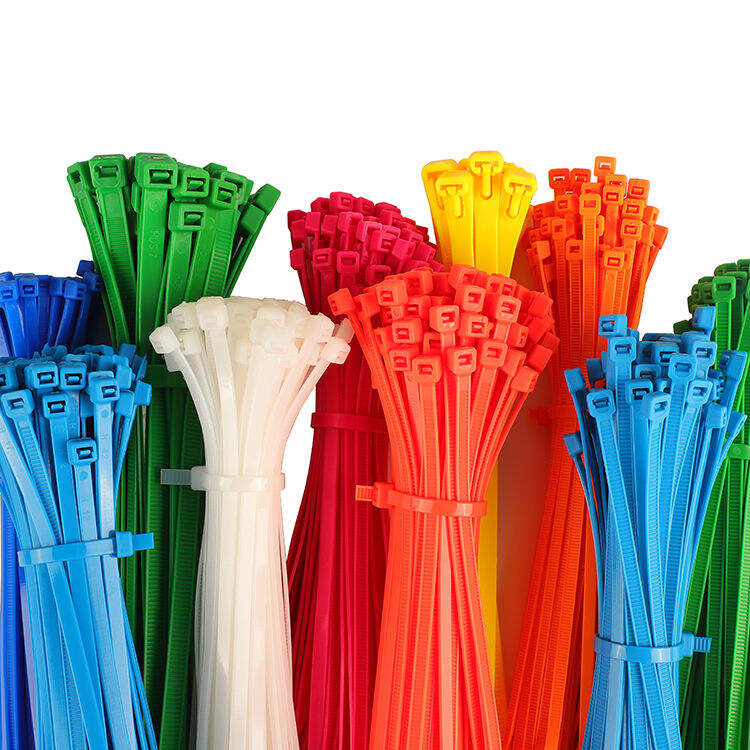Why Cable Tie Label Quality Impacts System Reliability
The Role of Cable Tie Label in Preventing Network Downtime
Good quality cable tie labels are actually pretty important for preventing system failures because they help technicians spot what needs attention quickly when doing maintenance work. Studies from places like the Uptime Institute back this up showing that proper labeling cuts down on mistakes made by people working in high stakes situations somewhere around 50-55%. Think about what happens if someone gets mixed up between different fiber optic cables inside a busy data center. One wrong move could accidentally disconnect main servers and cause all sorts of problems across entire networks.
How Poor Labeling Leads to Costly Maintenance Errors
Faded or missing labels force technicians into time-consuming guesswork, significantly increasing the risk of mistakes. In industrial settings, a single misidentified power cable can cause unintended equipment shutdowns, costing manufacturers an average of $260,000 per incident in lost productivity.
Data Point: 67% of Data Center Outages Linked to Mislabeled Cables (Uptime Institute, 2022)
Industry analysis shows that over two-thirds of unplanned data center outages stem from improper cable identification. These preventable incidents cost enterprises $9,000 per minute in downtime, highlighting the urgent need for reliable labeling systems.
Permanent vs. Temporary Cable Tie Labels: Choosing for Reliability in Industrial Settings
| Label Type | Ideal Environment | Key Advantage |
|---|---|---|
| Permanent Labels | High-vibration factories | Withstand chemicals >200°F |
| Temporary Labels | Lab testing configurations | Allow 50+ reuses without wear |
Industrial environments with corrosive materials benefit from etched stainless steel labels, while IT teams managing dynamic setups rely on reusable nylon ties with writable surfaces. Together, these solutions help avoid the $740,000 average annual cost of labeling-related failures in heavy industries (Ponemon, 2023).
Key Features of High-Performance Cable Tie Label Solutions
Durable Labeling Materials That Withstand Extreme Conditions
High-performance cable tie labels use industrial-grade nylon and polyester engineered to endure temperatures from -40°F to 200°F, resisting abrasion, chemicals, and mechanical stress. In harsh environments like offshore platforms or manufacturing floors, 83% of maintenance teams cite label degradation as a leading cause of misidentification (Industrial Safety Report, 2023).
Color Coded Cable Labeling for Instant Identification
Adopting standardized color systems aligned with TIA-606-B allows technicians to distinguish power, data, and safety circuits at a glance. Facilities using color-coded labels experience 52% fewer identification errors than those relying on text-only methods, based on a 2023 data center efficiency study.
Label Durability and Environmental Resistance: IP68 and UV Ratings Explained
IP68-certified labels offer full protection against dust and water immersion, making them ideal for outdoor or marine applications. UV-resistant materials maintain legibility for over a decade in direct sunlight, cutting relabeling costs by 71% in long-term infrastructure projects (2022 telecom construction analysis).
Reusable vs. Permanent Cable Tie Label Systems: Best Use Cases
Advantages of Reusable Cable Tie Labels in Dynamic IT Environments
For IT departments dealing with constant network adjustments, reusable cable tie labels provide real practical benefits. These labels let technicians make necessary changes without cutting up cables or creating unnecessary trash, which matters a lot in data centers since networks there often get reconfigured around three or four times annually. Good quality reusable labels with their snap on and off feature cut down on relabeling work by about two thirds when compared to sticky alternatives. Field tests show these labels stay legible even after being reused over fifty times, making them a cost effective solution for facilities that need to keep track of changing infrastructure without breaking the bank on labeling materials.
When Permanent Cable Tie Label Installations Are Non-Negotiable
Permanent labels rated for 20+ years are essential in critical infrastructure. In high-vibration environments like manufacturing plants and power substations, chemically bonded permanent labels reduce fault rates by 78% compared to reusable alternatives, according to energy sector maintenance reports. These systems are required when:
- Temperatures exceed 175°F (79°C)
- Daily chemical or abrasive exposure occurs
- Regulations mandate tamper-proof identification
Case Study: Financial Firm Reduces Reconfiguration Time by 40% Using Reusable Labels
A multinational bank streamlined data hall upgrades by deploying color-coded reusable cable tie labels across its 12,000-fiber network. Tool-free adjustments cut average circuit modification time from 22 to 13 minutes and reduced misidentification errors by 92% during phased modernization. Post-implementation audits revealed $218,000 in annual savings from reduced downtime and material waste.
Lifecycle Cost Analysis: Balancing Initial Savings and Long-Term Reliability
Although reusable labels have a 30%–50% higher upfront cost, they deliver better long-term value in frequently modified environments:
| Cost Factor | Reusable System | Permanent System |
|---|---|---|
| 5-year material cost | $2,800 | $4,100 |
| Labor cost/hour | $18 | $47 |
| Error-related losses | $9,200 | $34,500 |
This data supports guidance from leading data center operators: selecting the right label system directly affects operational resilience and total cost of ownership over time.
Compliance and Best Practices in Cable Tie Labeling
Cable Labeling Standards from TIA-606-B to ISO/IEC 14763-2
Compliance with global standards such as TIA-606-B and ISO/IEC 14763-2 ensures consistent, auditable cable identification across industries. These frameworks require durable, legible labels placed uniformly to support traceability. For example, TIA-606-B defines formats for end-to-end circuit tracing, reducing reconfiguration errors by 32% in structured installations.
Labeling Best Practices for Data Centers: Traceability and Audit Compliance
To meet SOC 2 and other compliance requirements, data centers should use labels that resist humidity, dust, and handling wear while enabling rapid troubleshooting. Recommended practices include:
- Applying color-coded cable tie labels by signal type or voltage
- Embedding QR codes for automated asset tracking
- Positioning labels within 6 inches of termination points per ANSI/TIA guidelines
These measures establish a verifiable chain of custody for network infrastructure.
Industrial Labeling Best Practices in Manufacturing and Energy Sectors
When working in places where temperatures soar and risks run high, the labels just cant give up easily. That's why we see so many facilities turning to those IP68 sealed polymer labels that can stand up to UV damage too. They hold their own even when things get really tough out there. Some recent testing back in 2023 showed something interesting about heat shrink labels surviving at 200 degrees Celsius for about four times longer compared to regular vinyl ones. Now when dealing with chemicals, nothing beats etched metal tags paired with UV curable inks for lasting identification marks that won't wash away no matter what harsh solvents might come along. These kinds of labeling practices really matter because one wrong mark on an emergency shutdown circuit could mean disaster down the line.
FAQs
Why is cable tie labeling crucial in preventing network downtime?
Cable tie labeling is important for quickly identifying network components during maintenance, thereby reducing the risk of accidental disconnections and system failures.
What are the downsides of poor labeling in industrial settings?
Poor labeling can lead to time-consuming guesswork, causing maintenance errors and leading to costly industrial shutdowns.
How can reusable cable tie labels add value in dynamic IT environments?
Reusable labels are cost-effective by allowing multiple reuses in changing setups, thereby reducing relabeling work without causing waste.
What standards should be followed for cable tie labeling?
Global standards like TIA-606-B and ISO/IEC 14763-2 ensure durable, legible, and traceable cable labels, boosting reliability and supporting audits.


